Of the hundreds of children’s books featuring our national bird, here are some all-stars that will help children and adults alike get to know these fascinating creatures better.
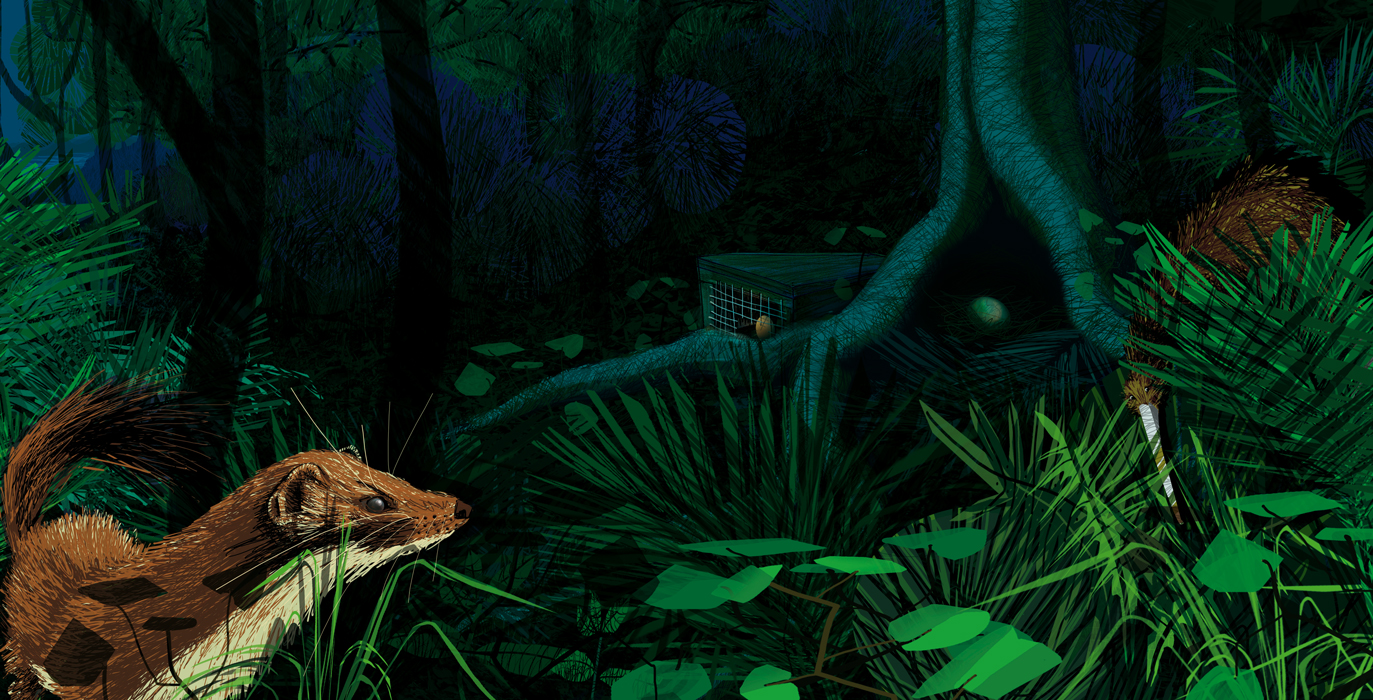
One of my very favourite books when I was little – I remember it from kindergarten age – was Kahu the Cautious Kiwi, by Brian Birchall, illustrated by Hadley Hodgkinson.
I just tracked down a second-hand copy of it, and am delighted to find that it’s as good as I remember. It’s part of a series of realistic stories about animals, along with Charlie the Cheeky Kea and James the Captain Cook Pig, that were school library staples throughout the 1970s and 1980s.
It’s quite long and detailed for a picture book, but my own children, nearly three and nearly six, were both utterly absorbed with the story of a kiwi who faces the perils of dogs, a river, a wild cat and a possum trap before being nursed back to health by a quietly impressive boy called Henry. There’s a hilarious section where Kahu follows Henry to school – very much like Mary and her lamb – before finally being released back into the bush.
Kahu is a perfect example of how real animals can star in compelling stories, while still remaining animals. Kahu is a kiwi, not a kiwi-shaped human being. Birchall doesn’t ascribe human emotions or analysis to Kahu’s experiences, but the narrative draws us in just the same.
Today we have a list of kiwi books – some very recent, some older – that share this same ethos. No anthropomorphism in sight, and plenty of reasons to love our national bird.
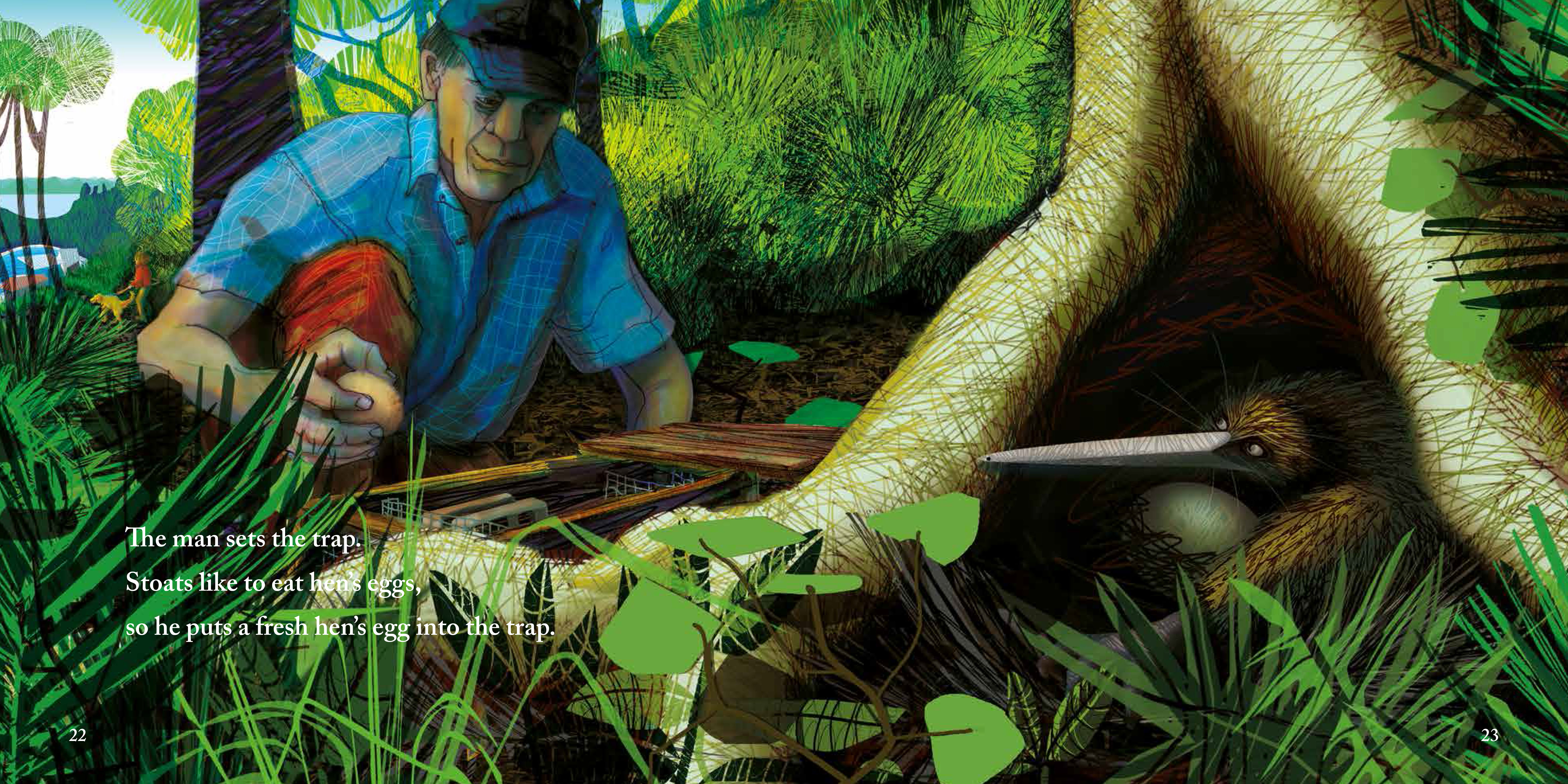
It’s My Egg (and You Can’t Have It!), by Heather Hunt and Kennedy Warne
I thought I knew a lot about kiwi before starting this survey – I’ve lived in this country for decades, after all – but right at the beginning I learned from It’s My Egg that a mother kiwi is so depleted by growing her enormous egg that once it’s laid, she disappears to eat and recuperate, and it’s the father who incubates it.
So in this second collaboration between illustrator Heather Hunt and writer Kennedy Warne we have a father kiwi, doing his duty in the hollow of a tree. The story then unfolds in a classic dramatic pattern, as one after another, three different predators threaten the egg and are repelled by a furious defense of claws and beak. The frenzied pictures of the father kiwi on attack are pretty fun, though still consistent within the distinctive, zoologically accurate aesthetic of the book. The white text sometimes doesn’t have quite enough contrast with the busy pictures behind it, but it’s legible.
There’s a clear message throughout the book about how to protect kiwi. One of the threats is a friendly, curious dog, whose human companion learns she must keep him on a leash in the bush, and we see the efforts of rangers to trap predators.
The title is in fact a repeated refrain as the kiwi responds to each attack: ‘It’s my egg, and you can’t have it!’ This makes it a particularly good read for pre-schoolers, as long as they can cope with the sinister subject matter of predation – some of the attackers are quite scary-looking!
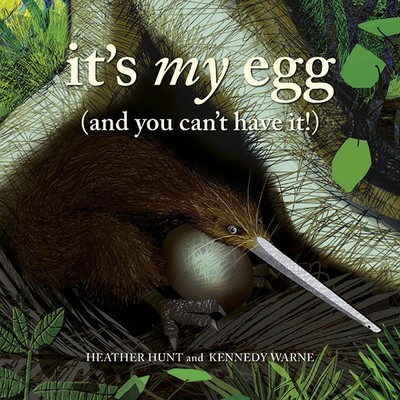
it’s my egg (and you can’t have it!)
By Heather Hunt and Kennedy Warne
Published by Potton & Burton
RRP $20.00
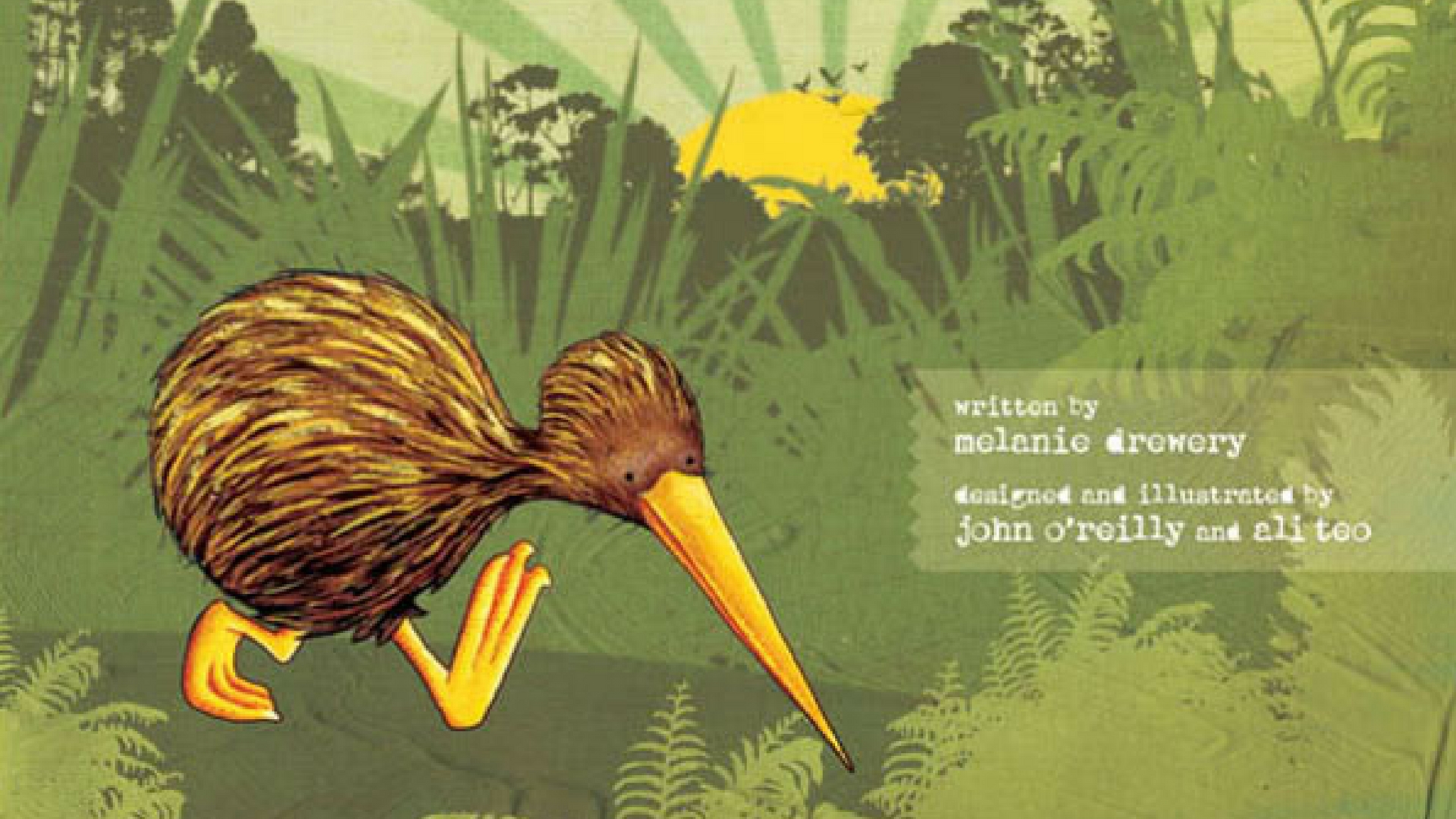
Tahi: one lucky kiwi, by Melanie Drewery, designed and illustrated by John O’Reilly and Ali Teo
This is the particular favourite of my committed conservationist five-year-old. A finalist in the New Zealand Post Book Awards for Children & Young Adults (as they then were), this lively picture book tells the story of an injured kiwi through the daily reports of a keen school-kid.
Each spread has a classroom (or field-trip) scene, where our charismatic young kiwi enthusiast updates everyone on the latest news of a kiwi whose leg is badly injured in a trap, accompanied by school project notes of facts about kiwi.
Again, I learned plenty from these! We see the distribution of different subspecies, learn about kiwi anatomy, calls and diet, and then get the nitty-gritty on how all sorts of people – including not just vets, but also unexpected outsiders like designers at Weta Workshop and the Wellington Artificial Limb Centre – help in the recovery of the injured bird.
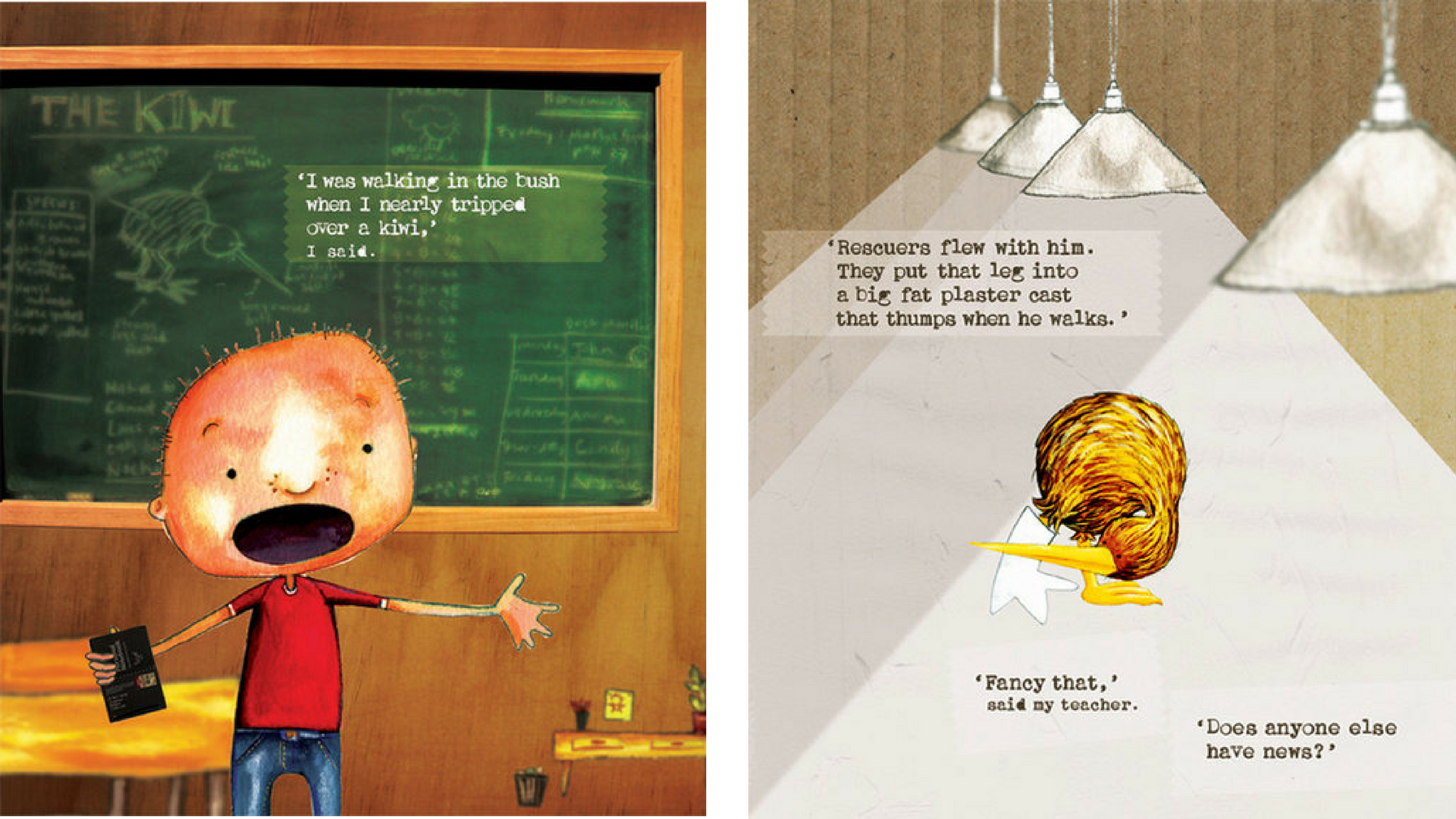
Not just any bird, either. This is Tahi, who is even now (12 years after publication) a high profile resident of Wellington Zoo, and happy to demonstrate a jaunty hop on his one leg to anyone who wants to visit Te Ao Māhina, the nocturnal house. My kids and I saw him just last week!
I wish the fact boxes were larger – they’re a bit tricky to decipher sometimes, as they contain both typed information and notes in child-like handwriting, and sometimes cram in several tiny frames of photography. But I only wish that because they are so useful and interesting. This is a fun, informative, true story that’s accessible to little kids but full of interest for older ones, too. A guaranteed hit for anyone who’s been to Wellington Zoo and all other nature lovers, too.
It’s also worth noting that the New Zealand Picture Book Collection has a set of activity suggestions aligned with the New Zealand curriculum based on this book.
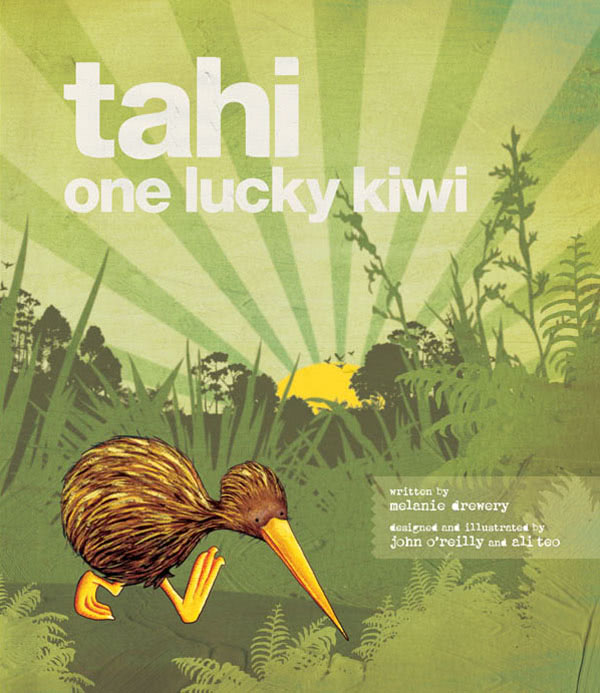
Tahi: One Lucky Kiwi
By Melanie Drewery
Designed and Illustrated by John O’Reilly and Ali Teo
Published by Random House
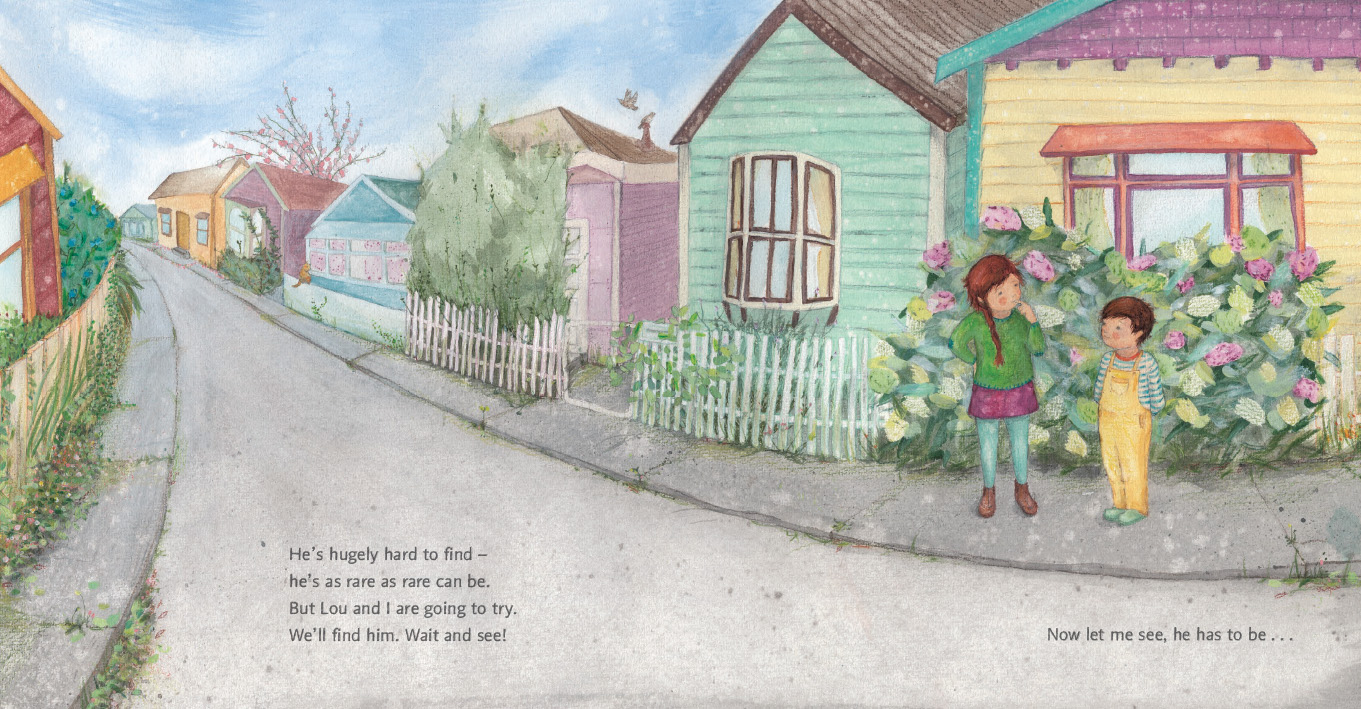
We’re Off to Find a Kiwi, by Juliete MacIver, illustrated by Kate Wilkinson
This is a great first kiwi book for little ones. Juliette MacIver’s typically first-rate, jaunty rhyming takes us on a tour of the country as two children go on a quest.
They have a lot of confidence, but not much knowledge about where a kiwi might be, so they take some wrong turns, and are helped along the way by a tūī, a sheep and a kea, until they finally put all the clues together and go to the right habitat.
Here’s a sample of the text, over a few pages:
‘Now let me see, he has to be …
Somewhere in the town!
We search the city, every bitty,
up the streets and down.
But gee, we see no kiwi.
Poor me! And poor wee Louie.
Then – lucky day! Hip-hip-hooray!
Here comes a helpful…
TUI!’
There are nice opportunities for children to guess what’s next, or join in a repeated line, and some of the rhymes are just hilarious. I won’t spoil the very best one, at the end, but trust me, this is Juliette MacIver at her best – as she seems always to be!
Kate Wilkinson’s illustrations are warm and friendly, with a good variety of composition, and lots of nice touches in the details. There’s a page of basic kiwi facts in the back, making this a complete package for one- to four-year-olds and beyond.
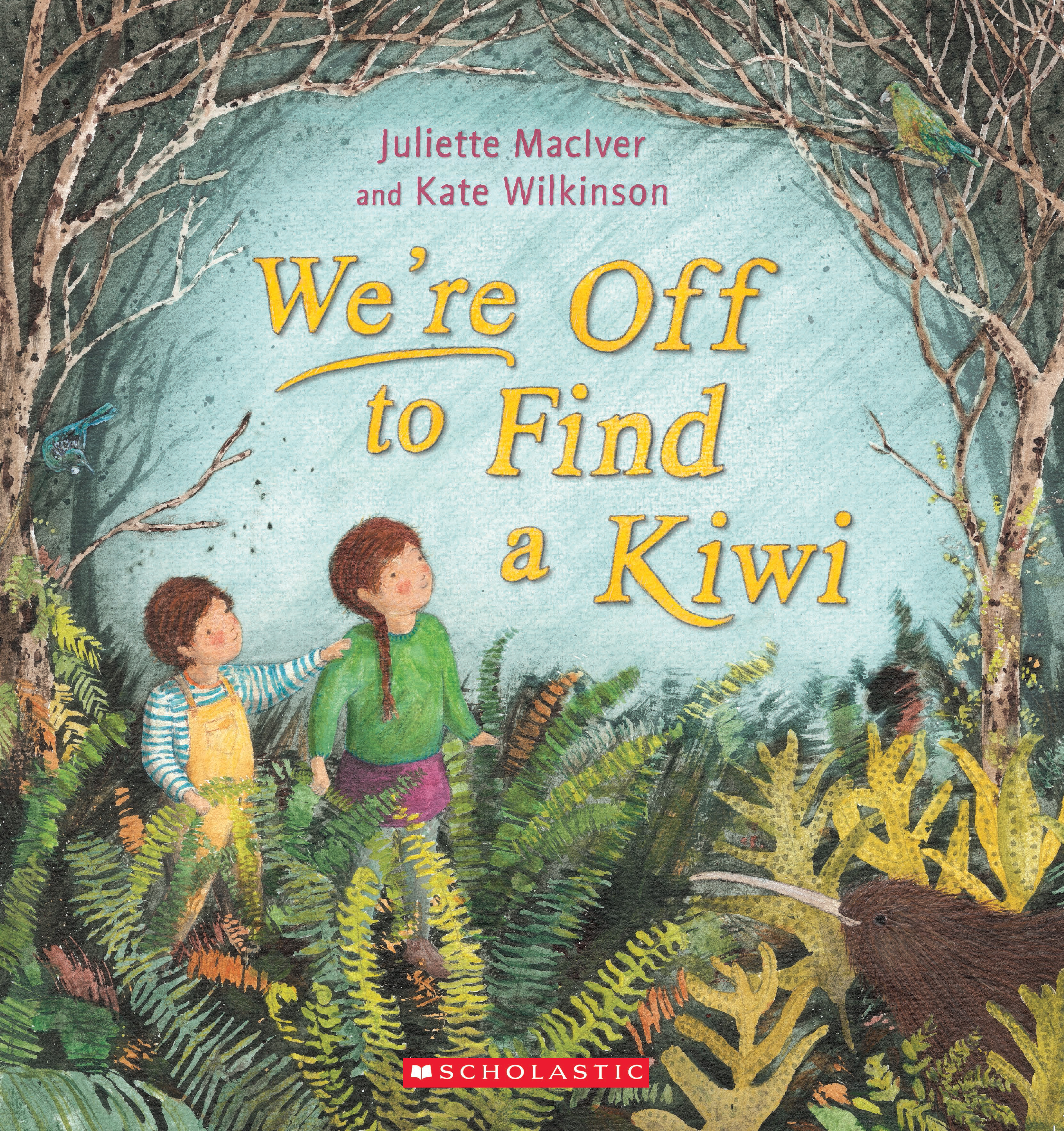
We’re off to find a kiwi
By Juliette MacIver
Illustrated by Kate Wilkinson
Published by Scholastic New Zealand
RRP $18.00

Manukura: The White Kiwi, by Joy Cowley, illustrated by Bruce Potter
National treasure Joy Cowley tells the story of a rare white kiwi born at Pukaha Mount Bruce, in the voice of Manukura herself.
As well as giving us insight into how the kiwi breeding programme works at Pukaha Mount Bruce, Cowley pays particular attention to the significance to Māori of a white kiwi, a taonga, and to the role of Ngāti Manuhiri and Rangitāne, the guardian iwi of Manukura.
The tone of the book is gentle and profound, as Manukura explains that she is seen as a tohu, a sign of a significant truth: we are all unique and special:
‘Think how special you are! Ever since the world began there has never been a person exactly the same as you, and there never will be again.
Manukura, the white kiwi, comes to remind you that you too, are a taonga, and the world is made better by the unique treasure you are.’
The beautiful illustrations are by Bruce Potter, and the royalties from this book go to Pukaha Mount Bruce to support their work with kiwi. As with the other books in this list, my kids and I learned plenty from this Manukura, including the fact that female adult kiwi are much bigger than males, and that Manukura isn’t an albino bird, lacking all pigment, just a rare white-coloured kiwi.
You can hear Maria Walker read this story beautifully as part of Radio New Zealand’s Treasure Chest.
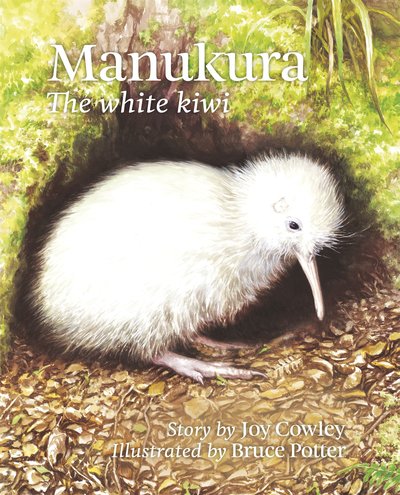
Manukura the White Kiwi
By Joy Cowley
Illustrated by Bruce Potter
Published by Penguin Random House
RRP $19.99
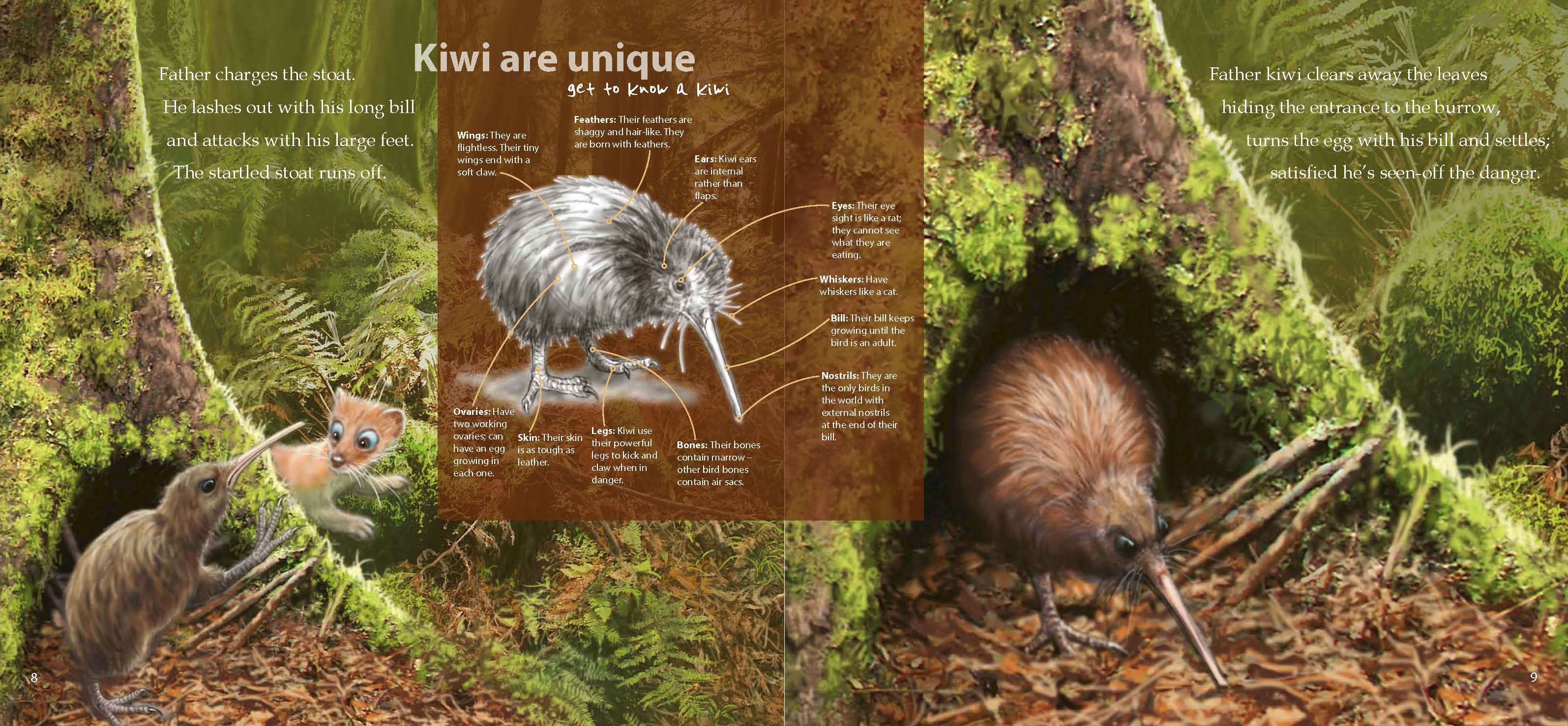
Operation Nest Egg Chick: A Kiwi Story by Maria Gill, illustrated by Bruce Potter
This informative book focuses on the problem of vulnerable kiwi chicks – only five out of every hundred reach adulthood in the wild – and the conservation solution at work right now.
This was the last book in today’s list that I read, so you’d think I wouldn’t learn any more from it, but goodness, there’s a lot of excellent detail here! Each page continues the main narrative in large, clean, four-line blocks of text, and Bruce Potter’s illustrations – in an engaging realism-caricature mash-up style – are overlaid with an excellent range of text boxes, maps and diagrams, with much more information for curious children and adults.
We see what happens to 95 percent of kiwi chicks in the wild, victims of predators, and then how Operation Nest Egg Chick intervenes, taking young eggs to special kiwi centres to hatch, then to brooders, to predator-free kiwi crèches, and finally back to the wild, where a nearly adult kiwi is able to defend itself from most predators.

Maria Gill has been writing factual books for children for a long time, and it shows. She has a sure touch for how much information to give and in what form. The editing was not always perfect, but that quibble is outweighed by the volume of enticingly-packaged information.
I learned that carers whistle to mature eggs to see if a baby chick is ready to whistle back and hatch! I learned that a mother kiwi might lay a second egg only twenty days after the first – goodness! It was especially encouraging to learn about the large number of different sanctuaries and kiwi centres around Aotearoa, and to read the long list of ways children and adults can help support kiwi recovery, from how we look after our pets, to bush behaviour, and ways to donate.
You can buy this book in hard copy or as an e-book, and it contains plenty of links to further material. An excellent addition to the bookshelf.
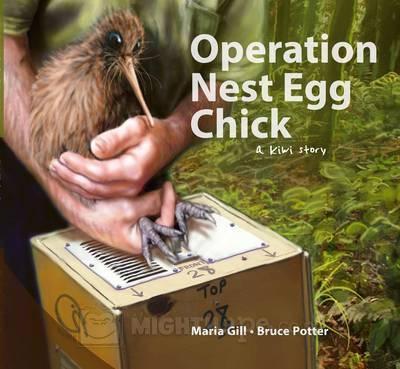
operation nest egg Chick
By Maria Gill
Illustrated by Bruce Potter
Published by Long White Cloud Books
RRP $25.00

Thalia Kehoe Rowden
Thalia Kehoe Rowden is a former co-editor of The Sapling, and a Wellington writer and human rights worker. She is passing on a family inheritance of book dependency to her two small children, and is delighted to be part of The Sapling, as it gives her even more excuses to read excellent children's books. You can follow her on Twitter, Facebook, and at her parenting, spirituality and social justice website, Sacraparental.



